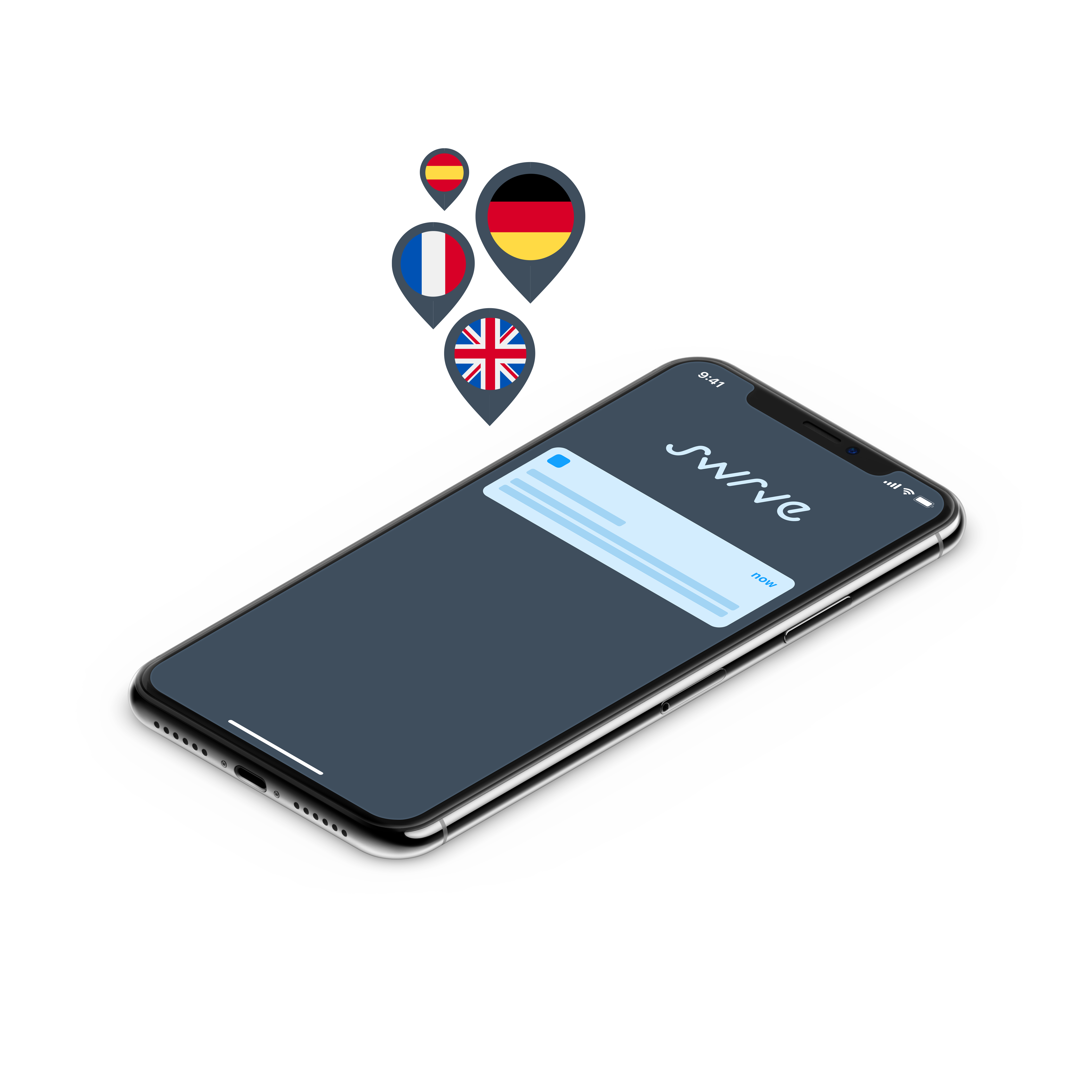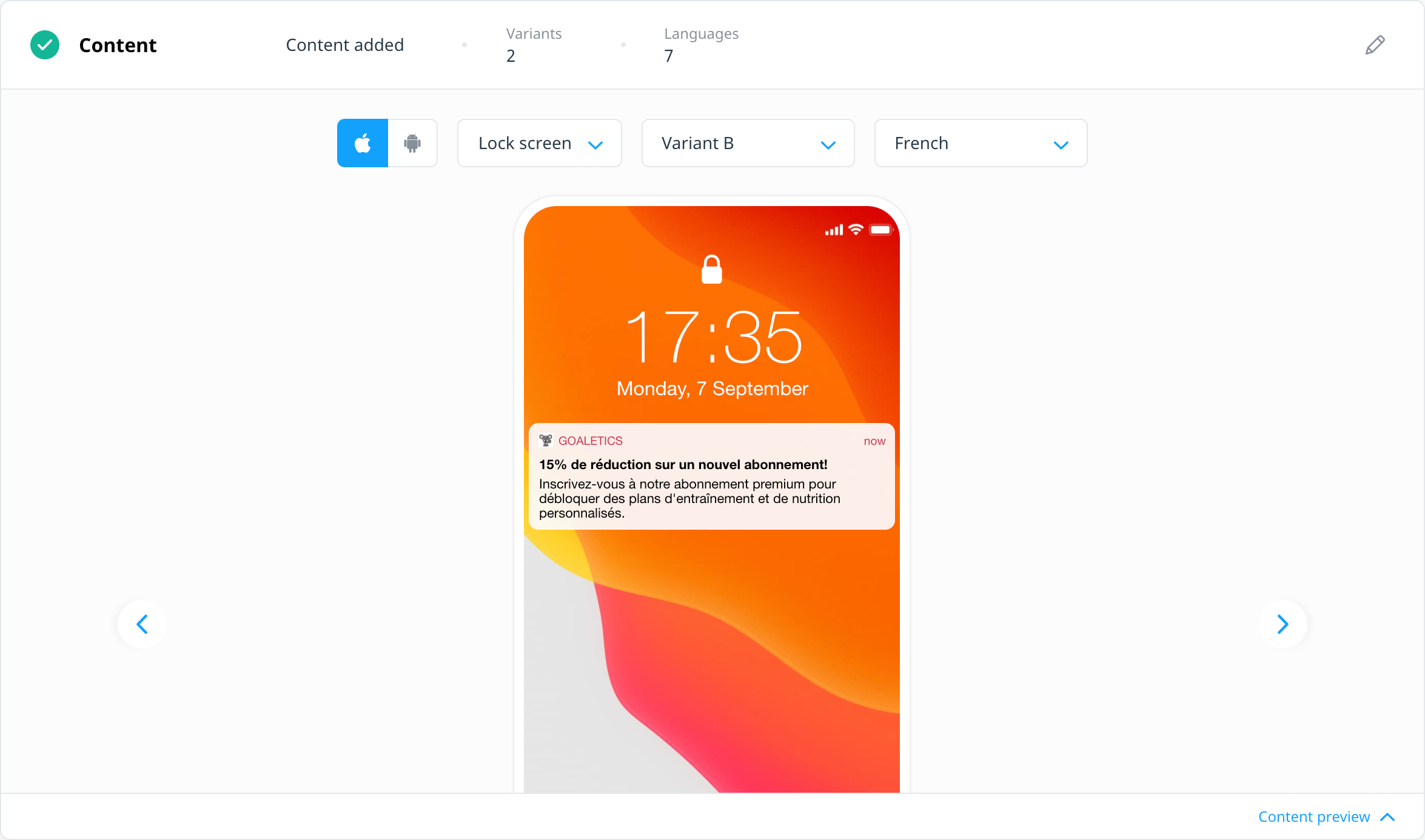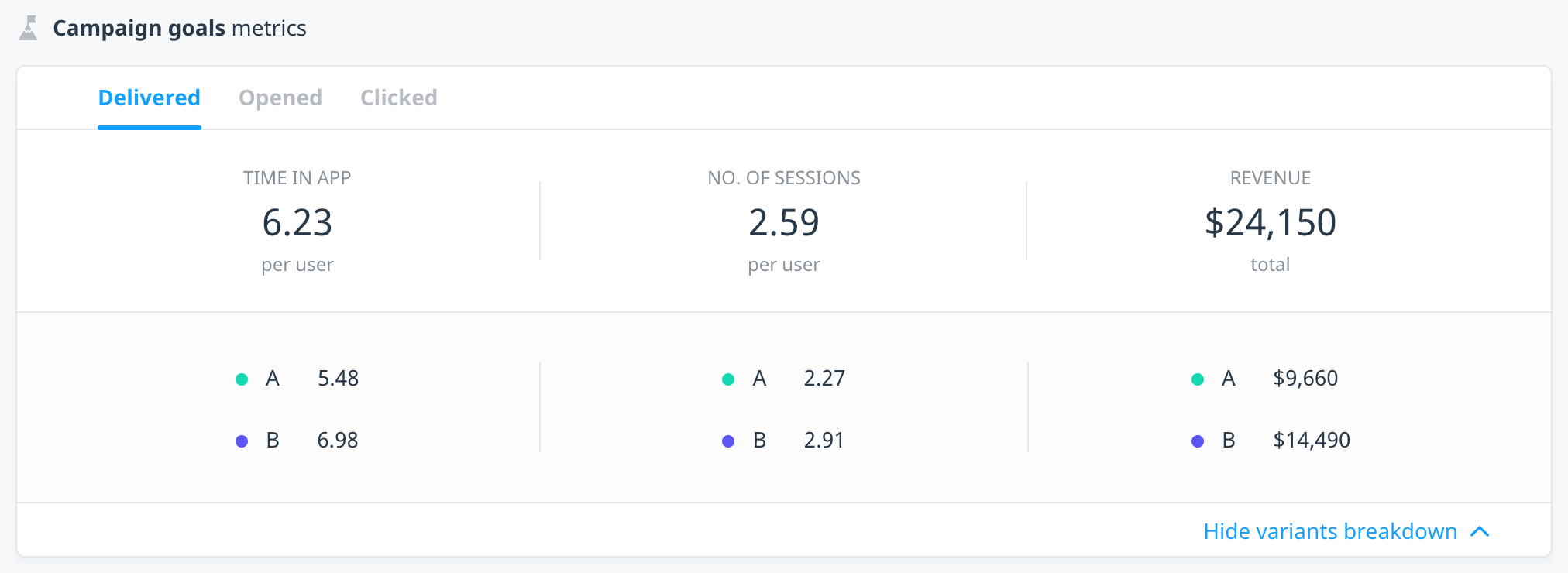Localizing and A/B testing campaign content
Localize your campaign content
Localization is more than just translating a message. It’s reaching those users in specific regions, countries, and locations, knowing their preferred language, and displaying a message in that language. Or adapting the tone or style of a message to make it culturally appropriate and region-specific. This makes the messaging more personal and relevant.
Test multiple variants
A/B tests are a great way to determine what style of messaging appeals to your users. Compare two or more versions of a message and measure the results of each user segment exposed to the campaign. Depending on the goal of the test, for example, increased revenue, you will see which variant offers the best result and can then use that style of messaging in future campaigns.
Localized, multi-variant campaigns are available for all campaign types that use our redesigned campaign workflow.
Add localized content
To localize your campaign message content, on the Content block of your campaign, select edit .
- Add your default campaign content. This content is displayed if the user’s language is not recognized and serves as a template for additional languages.
- To add languages, select Languages.

- In the Select languages box, enter the name of the languages you want to add or select them from the list. As you enter a value, the list is filtered to display only matching languages. Add as many languages as you need.
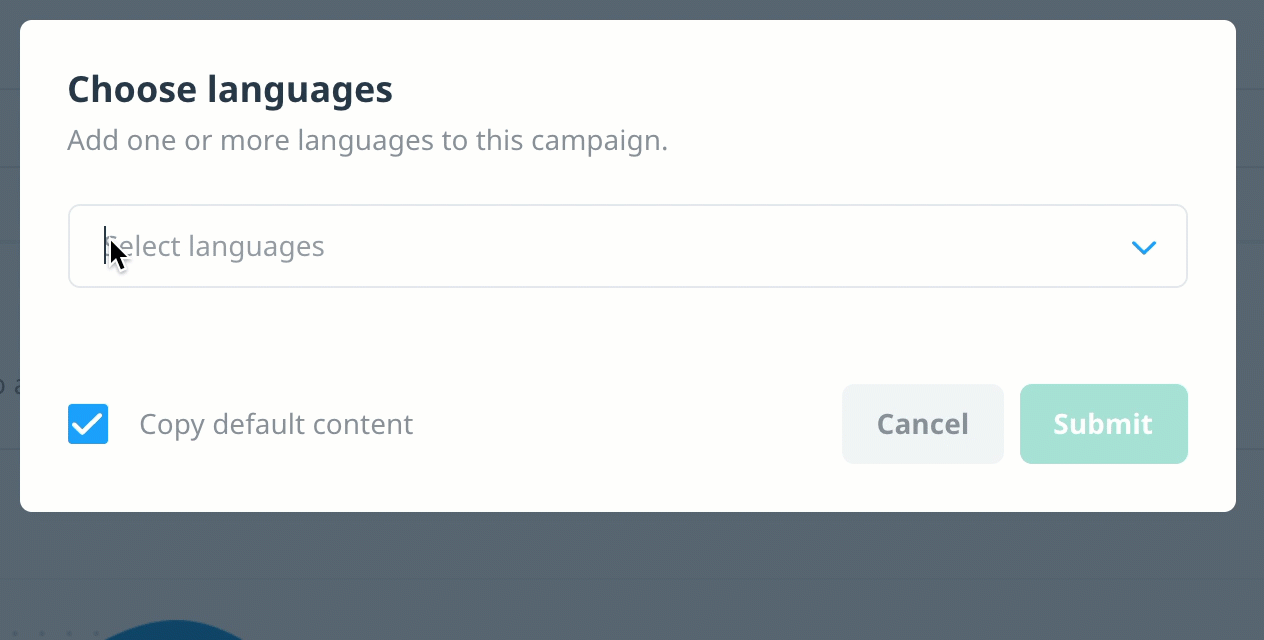
- To use your default content as a template for your other languages, keep Copy default content selected. Otherwise, you will need to add content for every language. After you’ve selected your languages, select Submit.
- To add your translated copy and language-specific content, select the language in the language pane.
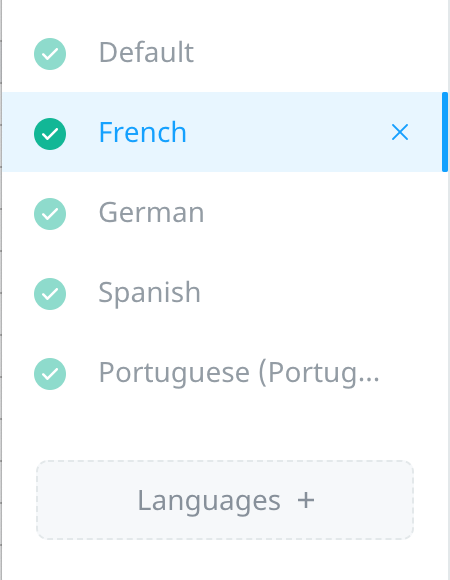
- After you’ve added your languages and localized content, to return to the campaign builder page, select Save.
Add and delete languages
To add additional languages after your initial selection, in the language pane, select Languages. This displays the same Choose language window as before and you can select your desired languages as outlined above.
To delete a language, hover over the language and select delete .
Add A/B test variants
The approach for setting up an A/B test is the same, whether you choose to localize the content or not.
- From the campaign builder page, select edit on the Content block. Add the content for your default or control message. Note: If you’re localizing the campaign, add any required languages and localized content first as part of the default message.
- To add an A/B test variant, select Variant.

- The default message becomes Variant A and any content, including languages, is automatically copied to Variant B. The target audience is divided evenly among the variants, based on the number of variants you add. Change the message content as required (for example, different tone, copy, images, media, calls-to-action).

- After you’ve added your variants and content, to return to the campaign builder page, select Save.
Localized A/B tests
As explained above, you can include multiple languages in your A/B tested campaign to improve the overall relevance of the message. We highly recommend adding your languages first as part of your default message, so they are automatically copied to additional variants. If you add or remove a language after you’ve already added a variant, you will need to manually add or remove the language from the other variants. To ensure the validity of your A/B test, we recommend each variant include the same combination of languages.
Add and delete test variants
To add another variant, select add next to the most recent variant.
To delete a variant, hover over the variant name and select delete . A warning message prompts you to confirm you want to delete the variant and all its content.
Preview localized, multi-variant campaigns
After you add your desired languages and variants and return to the campaign builder screen, the Content block displays a count of the number of variants and languages. To preview the content, select Content preview, and then use the Variant and Language lists to select the version of the message you want to view. Use the direction arrows to scroll through all the languages included in a selected variant.
Reports for localized, multi-variant campaigns
After you launch your localized or A/B tested campaign and it’s delivered to the audience, the tracked goals and metrics are displayed on the reports page. The top line metrics for the campaign display the overall performance funnel results, depending on the channel, while the campaign goal metrics display the results for the default and custom goals included in your campaign, per user cohort, both as an aggregated total and per variant. To expand the report and view variant metrics, select View variants breakdown.
If your campaign includes multiple languages, the metrics are reported as a total of all languages and are not broken down by language. However, if your campaign is only localized and doesn’t include A/B test variants, the metrics are broken down by language. If you require a per language breakdown of an A/B tested campaign or have any other questions about tracked metrics and goals, contact your CSM at support@swrve.com.
Next steps
- Review how to create a campaign in our consolidated campaign workflow. For more information, see Campaign overview and channels.
- View results and reports for your campaign. For more information, see Campaign reports.
